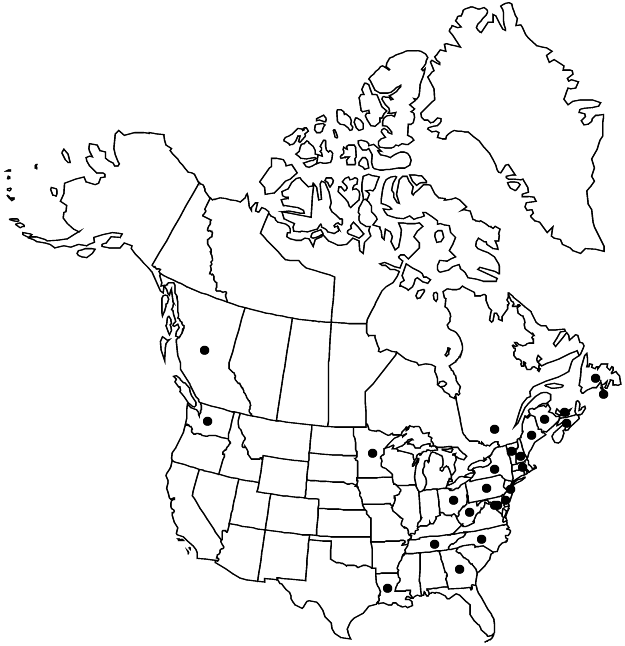Stellaria alsine
Nova Acta Phys.-Med. Acad. Caes. Leop.-Carol. Nat. Cur. 3(app.): 313. 1767.
Plants perennial, creeping, rhizomatous. Stems decumbent and ascending, branched, smoothly 4-angled, 10–40 cm, glabrous. Leaves sessile; blade narrowly elliptic, elliptic-lanceolate, or oblanceolate, 0.5–2(–3) cm × 2–10(–13) mm, base cuneate, margins thin with reticulate venation, entire, apex acute, glabrous, slightly ciliate basally. Inflorescences axillary with 1–5-flowered cymes in mid and distal axils of foliage leaves; bracts lanceolate, ca. 1 mm, scarious with green midrib. Pedicels 5–30 mm, glabrous. Flowers ca. 6 mm diam.; sepals 5, 3-veined, lanceolate-triangular, 2.5–3.5 mm, margins scarious, apex acute, glabrous; petals 5, 1.5–3 mm, shorter than (rarely equaling) sepals, blade apex 2-fid almost to base, with widely divergent lobes; stamens 10; styles 3, ca. 1 mm. Capsules green, ovoid, 2.5–3.5 mm, equaling sepals, apex broadly acute; carpophore absent. Seeds pale reddish brown, ± reniform, 0.3–0.4 mm diam., with small tubercles. 2n = 24.
Phenology: Flowering spring–early summer.
Habitat: Streamsides, flushes, wet tracks, ditches
Elevation: 0-300 m
Distribution

St. Pierre and Miquelon, B.C., N.B., Nfld. and Labr. (Nfld.), N.S., P.E.I., Que., Del., D.C., Ga., La., Maine, Md., Mass., Minn., N.H., N.J., N.Y., N.C., Ohio, Pa., Tenn., Vt., Wash., W.Va., Europe, introduced in South America (Chile).
Discussion
Stellaria alsine is presumed to be native in eastern North America but has been introduced elsewhere in North America and Chile.
Selected References
None.